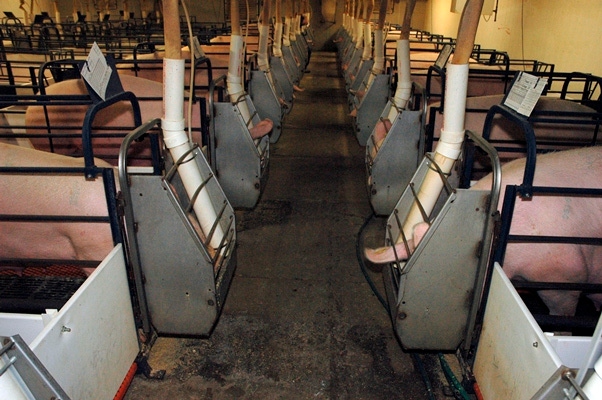September 25, 2013

This Friday’s release by the U.S. Department of Agriculture (USDA) of estimates for the U.S. Hogs and Pigs inventory as of Sept. 1 projects total inventory to be down 1.4% compared to a year ago, according to today’s Daily Livestock Report by Steve Meyer and Len Steiner.
The total inventory number is a composite of hogs that will come to market in the next four-plus months as well as the inventory of the breeding herd. Analysts broadly agree that the Sept. 1 breeding herd inventory will be larger than a year ago. The average of estimates pegs the breeding herd at +1.5% from a year ago. This would put the breeding herd as of Sept. 1 at 5.875 million head, compared to 5.882 million head on June 1 and 5.788 million head on Sept.1, 2012.
The expected increase in the breeding herd reflects lower rates of sow slaughter between June 1 and Aug. 31 as well as increased gilt retention as improved forward margins provide an incentive to expand the herd. According to data from the University of Missouri, gilt slaughter has been running below year ago levels for much of the summer. Monthly sow slaughter also shows that for the period June—August, total U.S. sow slaughter was 708,000 head, down 60,700 head or 7.9% from a year ago.
Like what you’re reading? Subscribe to the National Hog Farmer Weekly Wrap Up newsletter and get the latest news delivered right to your inbox every week!
DLR economists report that PED virus also may have contributed to an increase in the breeding herd. Producers have been very cautious in how they market sows this summer for fear of bringing the disease into their farms.
Analysts expect the inventory of hogs over 180 lb. to be down 3.8% from a year ago but the range is between down 6% and down 0.7%.
As for expansion, the expectation is for Dec -Feb farrowings to be up 1.1% on average with some expecting farrowings above 2%. Add to this a 1-1.5% pig per litter gain and there could easily be a pig crop of +2 to +3% for early next year.
To read the full report, visit www.dailylivestockreport.com.
You might also like:
High Hog Prices Negated by Feed Costs
Hog Slaughter Continues to Fall Short
Higher Sow Retention Suggests Bigger Pig Crop in 2014
You May Also Like



